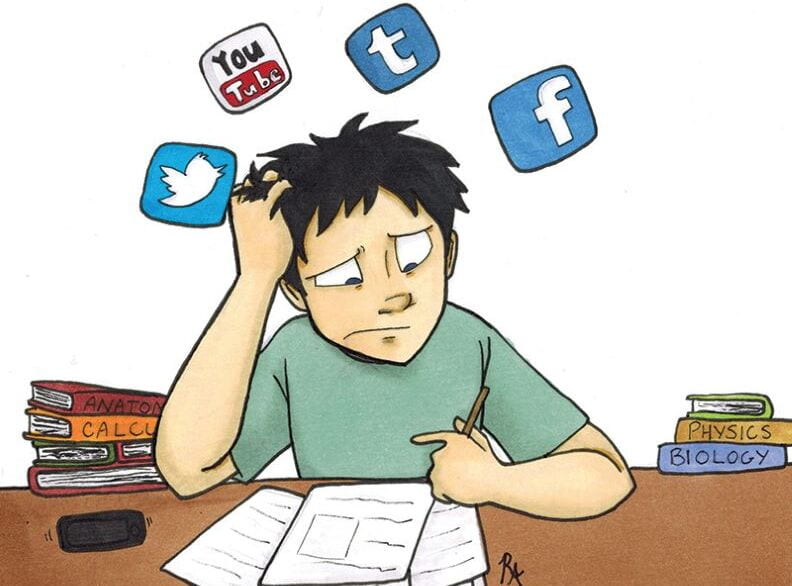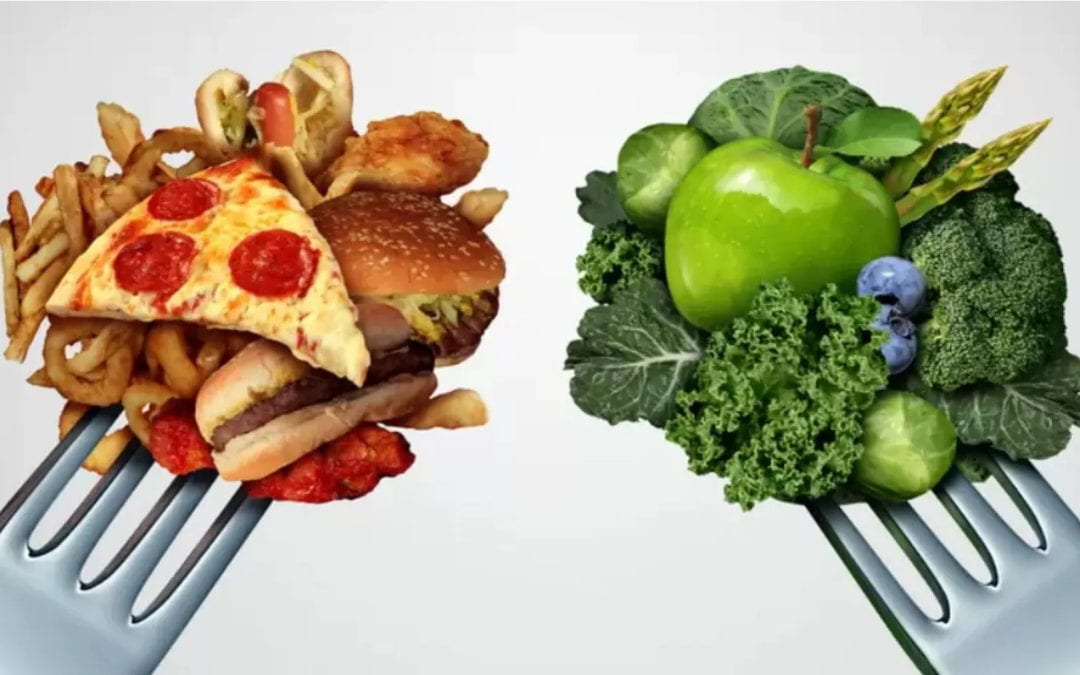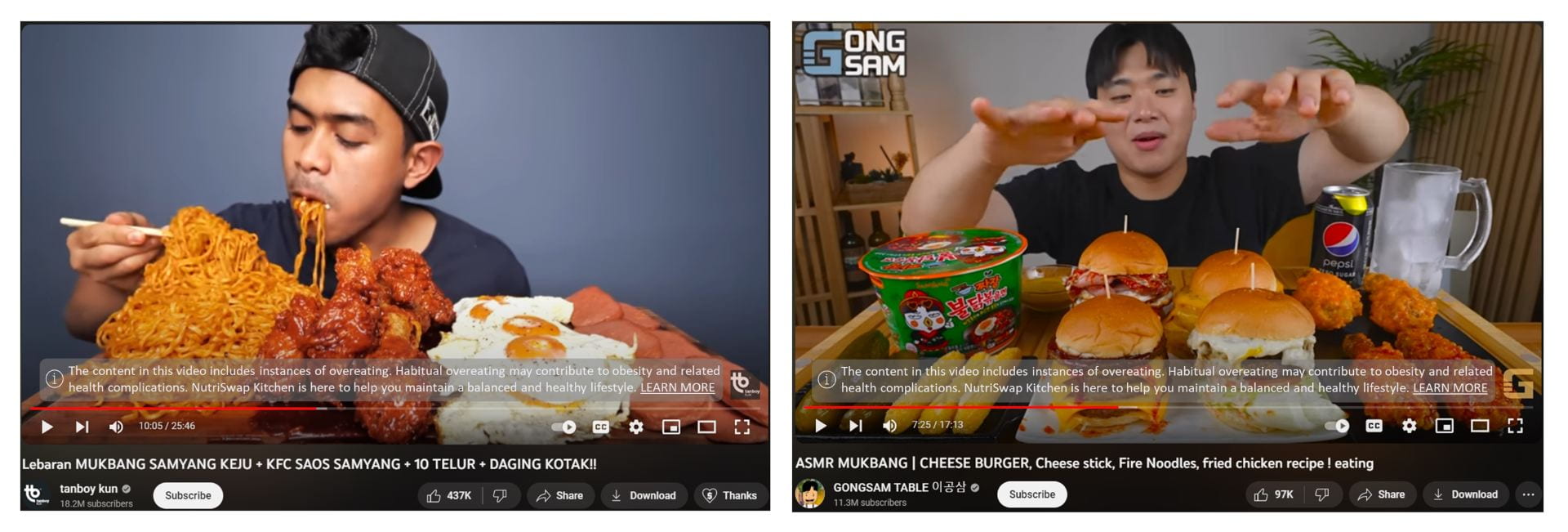
by rra65 | Nov 18, 2023 | Dashboard, Team Project, Visualization
In an era marked by a rapid exchange of information and digital connectivity, our attention spans have undergone a notable transformation. From an average of 150 seconds in 2004 to a mere 47 seconds in 2020, the ability to sustain focus has become a precious commodity. This shift carries far reaching implications, impacting not just our productivity but various facets of our lives. The ramifications of this decline are many such as decreased productivity, wasted time, disruptions to sleep, effects on mental health, and potential impacts on career opportunities.
In this blog, our focus will be directed towards concentration levels of university students in Lebanon. We will unfold the primary reason behind this decline and recommend a significant solution to address these challenges
Increase of social media users:
In a society dominated by social media and a tendency to immediately check notifications upon waking up, we’re confronted with a plethora of mental health challenges. Based on data from Statista, the percentage of social media users from total population has been gradually increasing since 2017 reaching over 4.59 billion users as of 2023, which accounts for 57% of the entire world’s population using various social media applications such as Instagram, Facebook, WhatsApp, Twitter, Snapchat, TikTok, YouTube, Reddit, and Discord. Social media penetration, which represents the percentage of social media users per population, seems to be at a high in Lebanon with a value of 89.5% in 2023. This means that the majority of the Lebanese population is using social media. Such a high penetration rate implies that social media has become a significant part of daily life for a large portion of the Lebanese population
Repercussions of social media: High distraction rate
Given the increase in the use of social media apps, and the high social media penetration in Lebanon, we surveyed 280 responses to study the effect of social media on university students in Lebanon.
The survey line chart visualization represents the answers of 3 main questions which are in respect to the number of hours spent on social media:
- How often do you get distracted by Social media when you are busy doing something?
- How easily distracted are you?
- How frequently does your interest in daily activities fluctuate?
The above graph showed a positive correlation between between the amount of time students spend on social media and their likelihood of getting distracted. Those who dedicate more hours to social media tend to encounter increased levels of distraction. This heightened distraction, in turn, leads to fluctuations in their interest levels in various daily activities which includes studying.
Remedies: Pomodoro technique

The Pomodoro technique is a technique involving taking intervals of time to study and rewarding yourself at the end of these intervals (25 minutes, 50 minutes). During the 25 minutes, individuals commit to completing their tasks and maximize their concentration by silencing/ turning off notifications, closing unnecessary tabs, and creating a study-friendly environment.
Rewards for completing a Pomodoro session come in the form of leisure time which is often spent on social media. This technique represents a form of delayed gratification that through routine makes it easier to focus on the task at hand. The technique is supported by the science of evolutionary biology which states that the human brain states in a state of alertness to avoid looming threats. Hence deactivating and reactivating the brain helps restart your body’s internal focus timer.
Pomodoro effectiveness
To prove the effectiveness of this technique, we conducted an experiment on a group of university students were we tracked the number of phone checking in 2 hours before and after using Pomodoro as well as the percentage of tasks they completed.
As we can tell by the bar graphs above , the number of times the students touched their phones without Pomodoro was significantly higher compared to using Pomodoro technique trials. Moreover, the percentage of tasks completed in 2 hours significantly increased after using Pomodoro technique in comparison to without it.
Our Solution: Pomodoro Prime App

A potential remedy for the problems caused by rising social media usage and shortening attention spans is our app’s creative features which utilizes the Pomodoro Technique. The apps features involve tabs to be chosen depending on what type of Pomodoro session a student would like to perform:
- Create an individual focus session with customized time intervals in which you can then periodically take breaks in between
- Join a Pomodoro session and connect with others studying with predefined time intervals that have periodic breaks in between.
In between these study sessions, there’s an option efficient break in which breaks that are commonly spent on YouTube mindlessly scrolling is now substitutable with options for stretching and meditation exercises during study sessions that will improve focus and calmness for better performance in the next sessions.

by cth07 | Nov 13, 2023 | Uncategorized
TEAM 3 – Full time
Houssem Chbichib, Charbel Hanna Daou, Manouella Helou, Chekri Khalife and Adam Salha
We’re sure you’ve heard your mother say this to you “Finish your plate, think of the children in Africa who go to bed hungry.” For centuries, the primary challenge in global nutrition was undernourishment, particularly in less developed regions. However, in recent decades, a significant shift has occurred, especially in developed countries, where the problem has paradoxically inverted. Today, unhealthy eating habits, accelerated by lifestyle changes and digital influences, have led to a dramatic rise in obesity and related health issues. But, why is this a critical issue in 2023, and how should we put a stop, or at least decelerate this trend?
Is Unhealthy Eating That Alarming?
The association of global nutrition statistics with economic indicators reveals a troubling trend in dietary habits, particularly in relation to caloric and fat intake within affluent nations. Empirical evidence, as illustrated by a scatter plot analysis, indicates a positive correlation between a nation’s gross domestic product (GDP) and its per capita daily caloric supply, which in many instances, exceeds the upper threshold of nutritional recommendations. The data, represented by a discernible upward trend line, suggests an average caloric intake ranging from 3400 to 3900 calories per day among high-GDP countries.
Tracking the fat supply per capita across continents over time shows that developed continents such as North America, Europe, and South America soar beyond the recommended daily fat range for a 2000-calorie diet, marked by a gray area on the chart. It’s conspicuous that the fat supply in these developed continents, significantly eclipses the recommended range.
Unhealthy Eating Reached a Peak, but Why?
The proliferation of social media platforms like YouTube and TikTok, has played a pivotal role in influencing global food consumption trends. These digital mediums are reshaping dietary habits, leading to an increase in consumption patterns that favor high-calorie, nutrient-poor foods.
Taking YouTube for example, the “Food & Drinks” category holds the leading position with 16 top channels, markedly surpassing the “Fitness” and “Health & Self-Help” categories, which have 3 and 2 leading channels respectively. This dominance is not limited to the number of channels; it extends to viewer engagement, as the “Food & Drinks” category also leads in terms of views and likes. These findings indicate a clear preference among YouTube audiences for content related to food and drink, as opposed to fitness or health topics.
Further analysis into the distribution of views between fast food and non-fast food channels reveals significant differences. Channels focused on fast food content show a greater variability in views, with some achieving exceptionally high viewership. This suggests that fast food content has a higher potential for going viral or capturing greater audience interest. Notably, the channel ‘Mis Pastelitos‘ stands out in the fast food category, averaging 2.3 million views per video, which is substantially higher than the most popular non-fast food channel, ‘Jessica Jane‘, with an average of 0.8 million views. This disparity highlights the stronger appeal of fast food content among YouTube viewers.
Notably, Google search engines show surprising results: the popularity of healthy food has been declining since 2021, while the search popularity of unhealthy food has been increasing. This is a significant change, as healthy food has consistently been more popular than unhealthy food in the past.
One explanation of this drastic change between 2021 and 2022 is that the COVID-19 pandemic has had a negative impact on people’s eating habits. During the pandemic, people were more likely to crave and order junk food. Additionally, the stress and uncertainty brought on by the pandemic may have led to comfort eating as a coping mechanism. With more time spent at home and disrupted routines, individuals may have found it challenging to maintain a healthy diet and instead opted for more convenient, albeit less healthy, food options.
Okay.. But How Does That Do Any Harm?
A 2016 research study, published in the US National Library of Medicine, revealed a significant correlation between fast food consumption and obesity in adults. The study found that adults consuming fast food more than twice a week had a 2.28 times greater likelihood of being obese compared to those who ate fast food less frequently than once a week. Furthermore, obesity is widely recognized as a contributing factor to various health issues.
Further analysis, showed a direct relationship between obesity and diabetes. The incidence of pre-diabetes and diabetes escalates in tandem with the severity of obesity, reaching its peak among individuals classified with Type III obesity.
Similarly, obesity is a major risk factor for hypertension. The prevalence of high blood pressure also increases progressively with obesity severity, culminating in the highest rates among those classified with Type III obesity.
This Has to Stop!
To curb the alarming trend of overeating and unhealthy eating, we propose three solutions:
Disclaimers
Disclaimers are warnings or statements that inform viewers about the content they’re about to see. Initially used for tobacco products to highlight health risks, disclaimers have been adapted for digital media, including YouTube, to flag potentially harmful or sensitive content.
Considering this, there’s a notable absence of disclaimers on food videos promoting unhealthy eating behaviors or binge eating on platforms like YouTube. Given the health risks associated with such content, similar to those posed by tobacco, the case for implementing disclaimers on these videos is compelling. This could help inform viewers and promote healthier eating habits.

NutriSwap Kitchen app
NutriSwap Kitchen is an engaging Streamlit app that adeptly transforms typical food cravings into nutritious meal options, enriched with access to nutrition experts and healthy food vendors. It’s a fantastic tool for anyone looking to balance indulgence with healthy eating.
Try NutriSwap Kitchen now and discover delicious, nutritious alternatives to satisfy your cravings!
#BreakAHabit Social Media Challenge
The #BreakAHabit challenge, launched on Instagram stories, is a creative social media initiative that we launched as a team. Similar to the viral #IceBucketChallenge, this challenge focuses on promoting healthy eating habits. Participants showcase their journey of choosing healthier meal options or transforming an unhealthy meal into a nutritious one.
It all started with the five of us nominating our friends, creating a ripple effect that expanded globally. As each participant shared their story, they nominated others, leading to a growing circle of impact. This challenge not only encourages healthier eating choices but also fosters a sense of community and inspiration on social media, as people from around the world are sharing now their unique approaches to adopting healthier habits.
Join The Movement
As we navigate the complexities of unhealthy eating in 2023, the landscape is set to change. Our proposed initiatives, including the strategic use of disclaimers on YouTube, the innovative NutriSwap Kitchen app, and the #BreakAHabit challenge are poised to reshape how people approach their dietary habits. Are you ready to be part of this transformation towards better eating habits?

by Karim Ahmad | Apr 28, 2022 | Dashboard
Contributors: Karim Ahmad, Razane Hani, Sara Kaddoura, Mohanad Rifai, Wassim Radwan, Ghida Raydan
Social media is defined by its interactivity, connectedness, and user-generated content. In today’s society, the use of social media has become a necessary daily activity. It is typically used for social interaction and is a valuable communication tool with others locally and worldwide, as well as to share, create, and spread information. It can influence consumers’ purchase decisions through reviews, marketing tactics, and advertising. Essentially, social media vastly impacts our ability to communicate, form relationships, access, and spread information, and arrive at the best decision.
Startups & E-commerce:
For an e-commerce startup, social media campaigns are the heart and soul of the business. Identifying what sort of marketing campaigns and what platforms to use can make or break the company. Most startups are going fully digital since it’s more profitable due to cost reduction and the absence of a physical location. Also, it’s more appealing to the younger generation to shop online due to their busy lifestyles and high usage of social media. With a solid online presence, it will be feasible for any company to expand globally.
Digital marketing campaigns should serve several purposes, for instance, engagement campaigns don’t focus on generating sales, it’s leaning toward generating interactivity on the content posted, while a conversion campaign is focused on turning potential customers into buyers. Those campaigns should be delivered using the right channels, deciding on which platform to use and the type of content to post on a certain platform will play a huge role in increasing audience engagement and enhancing the image of the brand.
Analysis and Insights:
In our case, we analyzed social media marketing campaigns that were implemented by a Lebanese e-commerce company. They launched multiple campaigns with different goals and used several platforms but the best-performing ones were Instagram and Facebook. The performance differed among the campaigns and platforms, Facebook had higher numbers when it comes to reach, impressions, and link clicks, however, Instagram generated more unique purchases. This can be linked to the demographics of Instagram users, the majority of them are millennials that make impulsive purchases and enjoy trying out new products.
In addition to measuring performance, data can act as a starting point for expansion plans. Google Trends offer data related to searches in different countries, analyzing this data will generate insights that will unleash new perspectives into what markets and which countries will have great potential if the company decided to expand.





